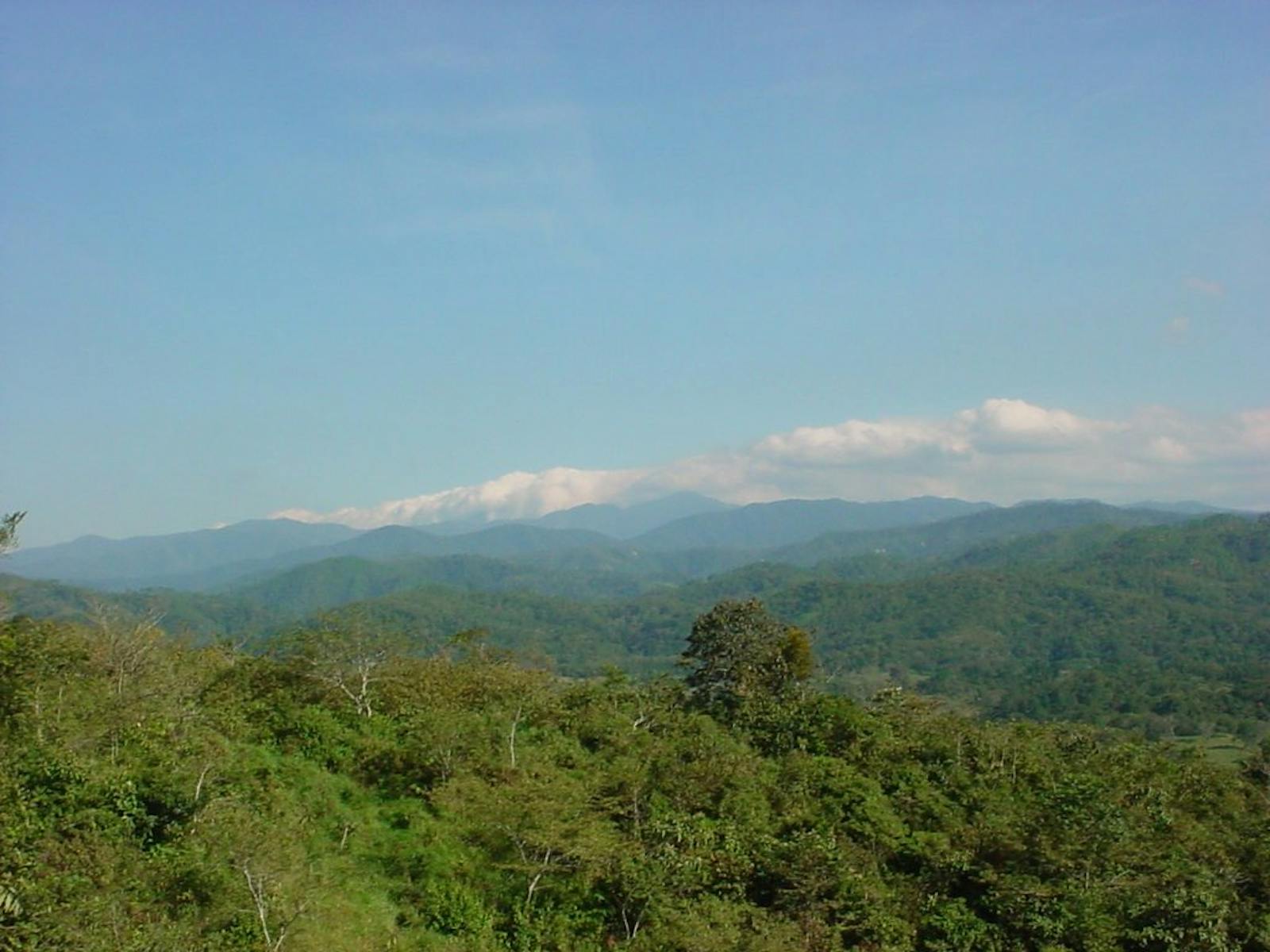Chimalapas Montane Forests
The ecoregion’s land area is provided in units of 1,000 hectares. The protection goal is the Global Safety Net (GSN1) area for the given ecoregion. The protection level indicates the percentage of the GSN goal that is currently protected on a scale of 0-10.
Bioregion: Central American Mixed Forests (NT25)
Realm: Central America
Ecoregion Size (1000 ha):
209
Ecoregion ID:
453
Conservation Target:
98%
Protection Level:
1
States: Mexico
This montane forest ecoregion is found in the Chimalapas Mountains and is the largest undisturbed cloud forests in Mexico. The climate is tropical and subtropical, cooling at higher elevations, which is perfect for the rufous-collared thrush. The thrush prefers the wet mossy, cloud forests, where it can hunt for insects and other small prey among the fallen oak leaves and acorns. Their dark colour and rusty breast make them nearly invisible in the dark understory, although their calls can be heard from great distances.
The Chimalapas Montane Forests occur in mountains above approximately 1,000 m at the junction of the three most biodiverse states of Mexico: Veracruz, Oaxaca, and Chiapas. This region is also at the junction of two Neotropical physiographical provinces, the Sierra Madre del Sur and the Sierra Madre de Chiapas. An abrupt topography change characterizes the area. Various mountains make up the region, which is characterized by plateaus, valleys, and cliffs.
.jpeg)
The flagship species of the Chimalapas Montane Forests ecoregion is the Rufous-collared thrush. Image credit: Diegoman, Creative Commons
The mountains are oriented east to west and are dissected by many rivers that run in a northeast-southwest direction, forming deep canyons. Ridges, towers, and limestone formations are common below 1,350 m elevation, while above granitic, heat, and pressure created formations can be found up to 2,250 m. The soils in the Chimalapas region are rocky with an abundance of chalk and are derived from sedimentary material. The soils tend to be shallow with a slight leaf littered layer. Summer rains contribute to the enormous humidity of this region (>2,500 mm/year). It is among the wettest areas of Mexico, together with Los Tuxtlas and the moist forests of Chiapas.
The Chimalapas Montane Forests contain a mix of vegetation associations (evergreen forests, semi-deciduous tropical forest, oak forests, pine forests, montane forest and also xeric scrub) contributing to high levels of diversity and endemism. Plant associations in this ecoregion includes species of mulberry, Guanandi, evergreen, and Terminalia amazona in deep soils in the lower elevations. Near the rivers, the dominant species are wild fig and Ocotea uxpanapana. In regions where slopes are steep, and at high, more humid environments, pine-oak forests are present.
In addition, the ecoregion is isolated from other cloud forests, leading to the diversification of many unique species and communities. Wendt (1989) proposed that the area formed an important refuge for species in the Pleistocene—another factor that contributed to the high numbers of endemic species. The cloud forest of Chimalapas constitutes the northernmost point of distribution for the near threatened resplendent quetzal. The ecoregion is also home to a number of endemic birds, including rufous-collared robin, rufous-browed wren, and ocellated quail. Most part of the ecoregion lies within the extensive North Central American highlands Endemic Bird Area.
Being the largest undisturbed cloud forest in Mexico, there are surprisingly few protected areas in the region, although there are a number of proposals for their establishment. La Sepultura Biosphere Reserve covers part of the ecoregion. Management plans to control soil erosion are urgently needed as the slopes of the mountains are susceptible to erosion, especially after being cleared. Regulations for land use are also needed, since land clearings for agriculture are rapidly expanding in the region.
The priority conservation actions in the next decade are to: 1) explore “wildlife friendly” agricultural practices to reduce conflict and local extirpation; 2) manage soil erosion at a regional scale; and 3) create legislation to protect the remaining montane forests.
Citations
1. Valero, A., J. Schipper, T. Allnutt. 2018. Mexico: Oaxaca and Chiapas. https://www.worldwildlife.org/ecoregions/nt0114. 25 July 2018.
2. WWF and IUCN. 1997. In S.D. Davis, V.H. Heywood, O. Herrera-MacBryde, J. Villa-lobos and A.C. Hamilton (editors), Centres of Plant Diversity: A Guide and Strategy for their Conservation: Volume 3, The Americas. IUCN Publications Unit, Cambridge, U.K.
3. Stattersfield, A.J., M.J. Crosby, A.J. Long, and D.C. Wege. (1998). A global directory of Endemic Bird Areas. BirdLife Conservation Series. BirdLife International, Cambridge, U.K.



